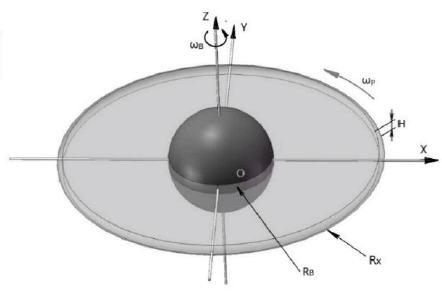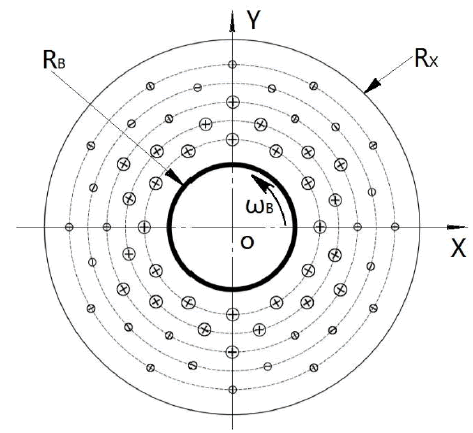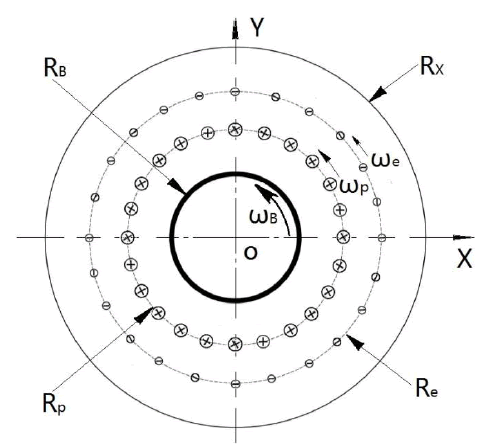Research
, Volume: 11( 6) DOI: 10.37532/2320-6756.2023.11(6).351High Energy Radiation Mechanism of Pulsar Accretion Disk and Black Hole Essence
- *Correspondence:
- Hongyuan Ye Yangtze Delta Region, Lab of Innovation, Jiashan, China, E-mail: hongyy@buaa.edu.cn
Received date: 01-June-2023, Manuscript No. tspa-23-100916; Editor assigned: 03-June-2023, Pre-QC No. tspa-23-100916 (PQ); Reviewed: 17-June-2023, QC No. tspa-23-100916 (Q); Revised: 19-June-2023, Manuscript No. tspa-23-100916 (R); Published: 29-June-2023, DOI. 10.37532/2320-6756.2023.11(6).351
Citation: Ye H. High Energy Radiation Mechanism of Pulsar Accretion Disk and Black Hole Essence. J. Phys. Astron.2023;11(6):351.
Abstract
The fundamental material of a neutron star black hole is neutrons, and there are no charges in a neutron star black hole. The supermassive black hole of a quasar has super greater universal gravitation, and electrons and protons are even less likely to exist. Since there are no charges in the black hole itself, and the black hole itself has only a gravitational field, it cannot generate electric and magnetic fields, and it cannot emit photons, so a black hole is essentially a dark star. This paper reveals that a pulsar black hole has an accretion disk that rotates at a super high speed. The positive ions in the accretion disk that rotates at a high speed generate a super strong pulsed magnetic field at the bipolar of the pulsar black hole. The high-speed positive ions and free electrons in the accretion disk decelerate violently in the process of random collision, and generate high-energy photons of X-ray and γ-ray. So the super magnetic field and high-energy X-ray and γ-ray of a pulsar are generated not by the neutron star black hole itself, but by the high-speed positive ions and free electrons in its accretion disk. When the high-speed rotating pulsar absorbs the adjacent matter to form an accretion disk, its rotation speed slowly decreases. When the rotation speed of the pulsar decreases to a certain speed, even if the pulsar absorbs the matter nearby, it cannot form an accretion disk. Finally, the pulsar evolves into a silent neutron star black hole with only a gravitational field. As dark stars, black holes do not have the so-called determined event horizon, but the super gravity of black holes causes the gravitational redshift of the magnetic fields and photons, which are generated by the high-speed moving charges in the accretion disk.
Keywords
Black hole; Neutron star; Pulsar; Accretion disk; Positive ion; Magnetic field radiation; x-ray and γ-ray; Dark star; Event horizon; Gravitational redshift
Introduction
In the late stage of a star evolution, the core will collapse due to the cessation of thermonuclear reaction, and the material density will increase dramatically. Suppose the mass of the sun is MS, if the mass of the star does not exceed 1.4 MS, a white dwarf will be formed [1]. If the mass of the star is greater than 1.4 MS, gravitational collapse will lead to higher material density, and electrons will be squeezed into the atomic nucleus to combine with protons to form neutrons, a neutron star will be formed. The upper limit of the mass of a neutron star cannot be determined as accurately as that of a white dwarf. According to modern observations, the mass of the black hole of neutron stars can reach tens of times the mass of the sun. This kind of black hole, which is evolved from stars and has a mass several to dozens of times that of the sun, is called "stellar black hole". In 1963, astronomical observations found another kind of super massive special object - quasars, which can form a "super massive black hole" with a mass billions of times that of the sun.
The fundamental material of the "stellar black hole" is neutrons, it has extremely high mass density, extremely fast rotation, and most of its diameter is about 10000 m. Due to the huge gravity of a black hole, it can attract the nearby matter into the black hole. The nearby matter forms an accretion disk on the central vertical section of the bipolar of the black hole's rotation axis. The matter in the accretion disk is sucked into the black hole in a spiral path. The closer the matter is to the black hole in the accretion disk, the faster it rotates. The accretion disk causes the black hole to release x and γ High energy ray, and form super strong magnetic field in the rotation axis bipolar. Modern astronomical observations can detect periodic high-energy pulse signals. Such neutron star black holes are called pulsars. Pulsars are neutron star black holes with accretion disks.
Since the first discovery of pulsars in the 1960s, we have discovered thousands of pulsars. Pulsars are mainly divided into two categories: One is binary pulsars, which are generally composed of a neutron star black hole and a companion star. The neutron star black hole can continuously absorb material from its companion star to form a stable accretion disk, which generates periodic highenergy pulse signals. The other is single star pulsars, which absorb nearby materials intermittently and generate intermittent highenergy pulse signals. Pulsars are the most widely studied kind of neutron star black holes. However, there are still many doubts about the formation mechanism of the pulsar's super strong magnetic pulses and high-energy x-ray and γ-ray pulses, which need further study.
Maxwell equations are an important theoretical basis of modern physics. Recent physical study reveals that an electric field, a magnetic field and a light field are respectively the position characteristics, velocity characteristics and acceleration characteristics of the charges [2]. The only way to generate an electric field is the existence of the charge, the only way to generate a magnetic field is the movement of the charge, and the only way to generate photons is the change of the charge energy level and the change of the charge velocity. This provides a new theoretical basis for the further study of black holes.
Accretion disk mechanism
The fundamental material of a neutron star black hole is neutrons. A neutron star black hole has very high mass density and spins very fast. Without losing generality, let the mass of the neutron star black hole be MB, the radius be RB, and the spin speed be ωB. The center point of the neutron star black hole sphere is O, and the Z axis is the spin center axis, that is, the polar axis of the neutron star black hole [3]. The X axis takes the spherical center O as the origin and is perpendicular to the polar axis Z, so the X axis is in the equatorial plane. The central section of the accretion disk is the equatorial plane, the thickness of the accretion disk is H, the outer edge radius is RX, and the inner edge radius is the black hole radius RB. As shown in FIG. 1.
Under the combined force of the universal gravitation and centripetal force of the black hole, the matter near the black hole dynamically accumulates near the equatorial plane of the black hole to form an accretion disk. The diameter of the accretion disk is much larger than that of the black hole. The atoms, protons and electrons in the accretion disk can exist independently. Under the combined force of gravity and centripetal force, the matter in the accretion disk is sucked into the black hole in a spiral motion path, and the closer it is to the black hole, the faster its rotation speed is. In the accretion disk, the motion speed of the materials between layers is different, which generates a lot of friction heat [4]. At extremely high temperature, the electrons escape from the atoms, forming negative electrons and nuclear positive ions. Since the positive ions are heavier, they move towards the black hole at a faster speed, while the electrons fall towards the black hole at a slower speed due to their lighter mass. FIG. 2 shows the distribution diagram of positive ions and electrons in the equatorial plane of the accretion disk [5].
Figure 2: The distribution diagram of positive ions and electrons in the equatorial plane of the accretion disk.
Take the average radius of gyration of nuclear positive ions in the accretion disk as RP, and the average velocity of gyration is ωP; The average radius of gyration of the electron is Re, and its average velocity of gyration is ωe. FIG. 2 above can be simplified as FIG. 3.
Figure 3: The simplified distribution diagram of positive ions and electrons in equatorial plane of accretion disk.
Magnetic field radiation mechanism of accretion disk
A moving charge generates a magnetic field, and the only way to generate a magnetic field is the movement of a charge [6]. The magnetic field intensity B at any point A in space is as follows.

μ0 is the vacuum permeability, 72 0410NA  , v is the velocity of charge q, r is the distance from point A to charge q, and r is the unit vector of r [7].
, v is the velocity of charge q, r is the distance from point A to charge q, and r is the unit vector of r [7].
As shown in FIG. 3, the charge of a positive ion in the equatorial plane of accretion disk  , and its velocity
, and its velocity  . According to equation (1), the magnetic field intensity generated by a positive ion on the central axis of the black hole.
. According to equation (1), the magnetic field intensity generated by a positive ion on the central axis of the black hole.

The charge of an electron in the accretion disk  , the magnetic field intensity generated by an electron on the central axis of the black hole [8],
, the magnetic field intensity generated by an electron on the central axis of the black hole [8],

According to equations (2) and (3), the magnetic field intensity generated by a pair of positive ions and electron on the central axis of the black hole.

Due to  ,equation (4) can be approximately simplified as,
,equation (4) can be approximately simplified as,

Because the magnetic field intensity generated by an electron on the central axis of the black hole is much smaller, it can be approximately omitted.
Without losing generality, take the radius of the black hole RB=5,000 meters, the velocity of gyration of the black hole is 20 revolutions per second, that is ωB=125.6 radians s-1. Take radius of gyration of positive ion layer Rp=2.0RB, and its velocity of gyration ωP=0.8ωB, then RP=10,000 meters, ωP =100.48 radians s-1, according to Formula (3-5), the magnetic field intensity generated by a positive ion on the central axis of the black hole:

Based on cosmic observation, let the magnetic field intensity of the black hole pulsar is 109 Tesla, the number of positive ions required.

Suppose the number of positive ions in the dynamic accretion disk is one ten thousandth of that of atoms, the number of atoms in the accretion disk is.

For a binary pulsar, the matter of the accretion disk of a black hole pulsar is obtained from the companion star [9]. Assuming that the mass of the companion star is equivalent to that of the sun, and the number of atoms is about NS=1056, the number of dynamic accretion disks that can be generated by the companion star.

Assuming the lifetime of the companion star is TS=1 billion years, then the time for the matter in the dynamic accretion disk to move from the outer edge to the surface of the black hole pulsar.
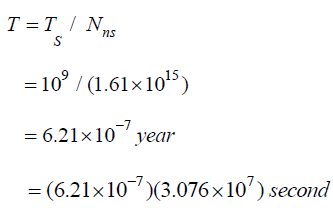
T=19.1 second
The above predicted calculation values are consistent with modern observation results.
X-ray and γ-ray radiation mechanism of accretion disk
When an electron jumps from the high energy level of an atom to the low energy level, the electron releases photons [9]. The generation mechanism of X-ray and γ-ray is also due to the charge transition and sharp deceleration, so X-ray and γ-ray belong to high-energy photons [10].
As shown in FIG. 3, the accretion disk contains a nuclear positive ion layer and an electron layer that rotate at a high speed. The average radius of gyration of the nuclear positive ion layer is RP, and the average velocity of gyration is ωP. The average radius of gyration of the electron layer is Re, and the average velocity of gyration is ωe
Regarding the positive ion layer in the accretion disk, take the black hole radius RB=5,000 meter, and the rotation speed of the black hole is 20 turns per second, that is ωB=125.6 radian s-1. Let the average radius of gyration of the positive ion layer RP=2.0RB, and the average velocity of gyration ωp=0.8ωB, then Rp =10,000 meter, ωp=100.48 radian/s. The velocity of positive ions.
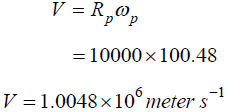
The velocity V is about one in three hundred of the speed of light. The high-speed positive ions in the accretion disk will decelerate violently in the random collision process, and generate X-ray and γ-ray, which are high-energy photons.
The free electrons in the accretion disk will also decelerate violently in the random collision process, and generate high-energy photons of X-ray and γ-ray.
Conclusion
An electric field, a magnetic field and a light field are respectively the position characteristics, velocity characteristics and acceleration characteristics of the charges. The only way to generate an electric field is the existence of the charge, the only way to generate a magnetic field is the movement of the charge, and the only way to generate photons is the change of the charge energy level and the change of the charge velocity.
The fundamental material of a neutron star black hole is neutrons, and there are no electrons and protons in a neutron star black hole. A neutron star black hole has no charge, and itself can’t generate electric fields, magnetic fields and light fields, so a neutron star black hole is essentially a dark star. Regarding the supermassive black hole of a quasar, the universal gravitation is much greater, and electrons and protons are even less likely to exist. Whether it is a neutron star black hole or a quasar black hole, they have only a gravitational field, do not generate an electric field and a magnetic field, and do not emit photons. Therefore, black holes are essentially dark stars.
The free electrons in the accretion disk will also decelerate violently in the random collision process, and generate high-energy photons of X-ray and γ-ray.
Astronomical observations can hardly find a silent black hole with only gravitational fields. The thousands of black holes that we can observe now are almost all neutron star black holes, which are called pulsars. Pulsars have an accretion disk that rotates at a high speed. Positive ions in the accretion disk that rotates at a high speed generate a super magnetic field on the bipolar of the neutron star black hole. The high-speed positive ions and free electrons in the accretion disk decelerate violently in the process of random collision, and generate high-energy photons of X-ray and γ-ray. So the super magnetic field and high-energy X-ray and γray of pulsars are generated not by the neutron star black hole itself, but by the high-speed positive ions and free electrons in its accretion disk.
When the high-speed rotating pulsar absorbs the adjacent matter to form an accretion disk, its rotation speed slowly decreases. When the pulsar's rotation speed decreases to a certain speed, even if the matter is absorbed from the vicinity, it cannot form an accretion disk. Finally, the pulsar evolves into a silent neutron star black hole with only a gravitational field.
As dark stars, black holes do not have the so-called determined event horizon, but the super gravity of black holes causes the gravitational redshift of magnetic fields and photons, which are generated by the high-speed moving charges in the accretion disk.
Availability of Data and Materials
All data generated or analyzed during this study are included in this published article.
REFERENCES
- Shapiro SL, Teukolsky SA. Black holes, white dwarfs, and neutron stars: The physics of compact objects. John Wiley Sons; 2008.
[Google Scholar] [Crossref]
- Ye H, Maxwell Equations and Principles of Electromagnetism, e-Print archive, viXra: 2207.0079, 2022 [Google Scholar] [Crossref]
- Renyi M, The X-ray Radiation from the Magnetized Black Hole – Accretion Disc System, A Dissertation for Doctor’s Degree, Huazhong Univ. Sci. Technol., Wuhan, 2006 [Google Scholar] [Crossref]
- Tang Z, Polarization of X-ray Radiation from High-accretion-rate Disk-corona Systems around Black Holes, A Dissertation for Doctor’s Degree, University of Science and Technology of China, Hefei, 2020 [Google Scholar] [Crossref]
- Xinji W, Guojun Q, Renxin X, Pulsar Physics, 1st Edition, Peking University Press, Beijing, 2020 [Google Scholar] [Crossref]
- Bartusiak M, Black Hole, 1st Edition, Hunan Sci. Technol. Press, Changsha, 2020 [Google Scholar] [Crossref]
- Feng W, Dai J et al., College Physics, 2nd Edition, Science Press, Beijing, 2021 [Google Scholar] [Crossref]
- Richard P, FEYNMAN L, Robert B, SANDS M. Feynman Lectures on Physics: The New Millennium Edition. Basic Books; 2015.
[Google Scholar] [Crossref]
- Newton, Mathematical Principles of Natural Philosophy, 1st Edition, Peking Univ. Press, Beijing, 2006 [Google Scholar] [Crossref]
- Maxwell, General Theory of Electromagnetism, 1st Edition, Peking Univ. Press, Beijing, 2010 [Google Scholar] [Crossref]
